Name: Mackenzie Bronson Age: 20 Home town: Binghamton, NY Area of Study: Religion and Modern Foreign Language (German & French) Year in School: Rising Junior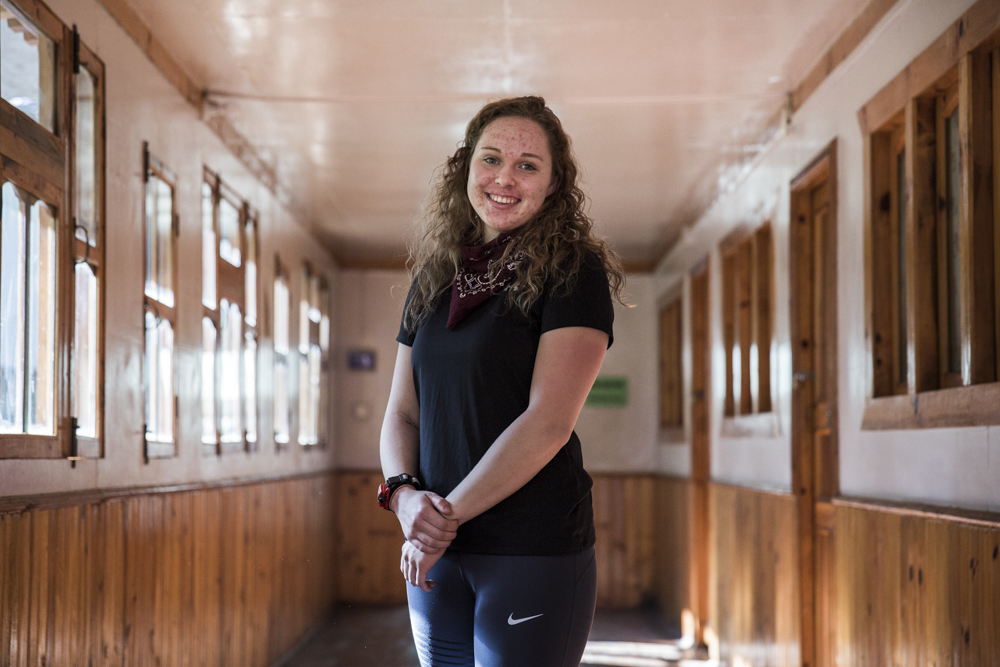
I joined the Everest Base Camp Expedition because…
To put it simply, I joined the Everest Base Camp Expedition because I thought it was the coolest opportunity I had ever come across. So far, this rings to be true. About halfway through this past spring semester, I started to consider applying for a summer study abroad program. I remember looking through all of the summer programs available through Syracuse University, and the only one that truly interested me was this one. Of course, I had heard of Mount Everest before but never thought I would be able to see it for myself. Since my studies are focused in the humanities as a religion and language major, this summer program did not necessarily correlate to my studies. However, after being on this trip I’ve learned so much about Nepal, the Sherpa culture, the effects of high altitude on the human body, and so much more.
I’m involved with the SU research studies by…
I am one of the many participants who partakes in daily measures. I’m also involved in the sleep apnea study headed by Anna Kalker, in collaboration with Pöntus Holmstrom for the breath-hold study.
For the sleep apnea study, I have to wear an actigraph, which is somewhat like a fancy Fitbit, for the duration of the trek. I’m wearing it, along with a few other people, to see if it will pick up sleep disturbances that are common when an individual is still acclimatizing to high altitude. Additionally, on rest days I also wear an apnea link while I sleep, which measures my breathing, my breathing effort, and oxygen saturation. As Anna Kalker has explained to me, when at a higher altitude, respiratory chemoreceptors increase in sensitivity. This then makes them overshoot in response to deviations from the normal response. Therefore, CO2 increases, which results in faster breathing, and then CO2 decreases resulting in apnea. Overall, this study relates the amount of apnea’s that increase in chemoreceptor sensitivity.
The breath-hold study, led by Pöntus Holmstrom, involves testing two maximum breath holds (or apneas), while spleen volume is being measured. When exposed to hypoxia, the spleen is evoked during apnea. This then boost red blood cells that are circulating in the bloodstream, which then increases oxygen-carrying capacity. How the spleen reacts to hypoxia altitude hypoxia is still somewhat unclear.
My favorite part of the trip so far has been… the ability to take part in this trek to Mount Everest Base Camp alongside such a motivated and supportive group of people. It’s truly a special experience to be surrounded by individuals who are deeply moved by their passions. It seems as though one passion or another has brought us all here to Nepal. Whether it’s scientific research, religion, culture, or the simple pleasure the mountains provide, we all seem to be chasing after something on this trek. For me, I am here in pursuit of a passion for nature and the mountains, in addition to a curiosity for religion and foreign cultures. Unlike many of the researchers and participants on this trip, my background is in the humanities, and I’m not too well-versed in the sciences. However, despite differences in educational backgrounds, and even places of origin, we share a common theme which is the pursuit of an individualistic passion. I think the Himalayan mountain range and Mount Everest specifically, offers something greater. Perhaps, that is a reason as to why we are all here, in pursuit of something more by expanding our knowledge and pushing our own limits.
The worst part of the trip so far… was accidentally dropping my sunglasses into a toilet. For those who haven’t personally witnessed toilets in the developing world, I can tell you it is quite the experience. Many of the bathrooms are technically just a glorified hole in the ground, with a squatting requirement. Although, aside from the odor, the bathrooms I’ve encountered so far have always been kept clean. A rule to the road, so to speak, is that you must always provide your own toilet paper, which can be somewhat of a hassle. However, I’m grateful that there are even bathrooms available on this trek at all, which beats having to constantly use the great outdoors. After having dropped my sunglasses, I experienced a brief moment of shock and then had to retrieve them. I wish I didn’t have to, but they are my favorite pair of sunglasses, and also the only pair I brought with me on the trip. For the folks back home who are currently reading this, do not fear. I washed the sunglasses with soap several times, in addition to sterilizing them with several alcohol wipes. Lesson to take away from this experience? Make sure everything on you is secured before heading into the bathroom, to avoid another mishap.
A few things I’ve thought were interesting… In the beginning of this trip, I learned that Sherpas are traditionally named after the specific day of the week they were born on. I found this to be an interesting cultural aspect, since it is such a foreign concept to me because of where I am from. In Western culture, it seems as though people want to be unique, and one way Westerners embrace their individuality is by having a unique, or somewhat unique name. However, I admire how the Sherpas have carried on this naming tradition. It is just another special aspect of their ethnic culture. Another thing I have found interesting is the rule to always move left around large religious objects on the trail. Generally, these religious objects are giant rocks with ancient Tibetan scripture written or painted on them. Often, the path diverges around these religious symbols, with one path to the left and the right. I’m not sure exactly why one has to pass around the left, but it might have something to due with respect for tradition. One other thing I have found interesting was the constant supply of Pringles in just about every lodge and store we have stopped in so far on this trek. Of all the snacks to see and buy on this trek, I wouldn’t have initially guessed it would be Pringles. Even better, they usually supply a variety of flavors, from Original to BBQ to Pizza flavored Pringles. I cannot complain though, I happen to think Pringles are delicious, and I’m so glad to be seeing them readily available almost everywhere here.
One thing most people don’t know about me… I wear prescription reading glasses when I work on a computer or read a book. In the near future, I will most likely need to wear glasses full-time. I think it’s interesting to note that at my last yearly check-up with the optician, the doctor told me that I qualified for bifocals. I think the idea of qualifying for bifocals is somewhat amusing, since I previously thought that it was only something older people would wear. Aside from the fact that my eyes are slowly worsening as I get older, I don’t mind having to wear glasses; I enjoy the look of them.
Daily Recap
Today was another long, yet rewarding day. Starting at 6am this morning, members of the group began taking their daily measures. Situated at 2840 meters, some people were already beginning to feel slight oncoming symptoms of high altitude sickness. From my understanding, many of us had difficulty getting a full night’s rest, or were experiencing a minor headache. Both of these symptoms are common minor signs of high altitude sickness, and it’ll be interesting to witness how those symptoms change for each individual as we continue to ascend up the mountain towards Everest Base Camp.
After daily measures were finished, we all ate breakfast together in the lodge around 8am. Porridge, hard-boiled eggs, and toast with the option of jelly were served. Soon after finishing breakfast, everyone gathered their things, applied sunscreen, and geared up for what was to come next. Fortunately, we were preparing to only hike the first half of the day, to then arrive in Namche and spend the next two days there. However, everyone knew that today’s hike was going to be strenuous, with 600 meters of elevation gain. The first hour of the trek wasn’t too demanding, but soon after the trail quickly became very steep. We took several brief rests here and there along our trek. These breaks served as blessings to catch a breather and conjure up some more will to continue further. With our steep incline through the mountains today, came absolutely gorgeous views. Like many others, I took quite a few pictures today. Although, it’s one thing to capture the natural beauty we are encountering on camera, but it’s another to witness it for yourself. By lunchtime, we arrived in Namche, a scenic village situated at 3340 meters. Soon after arrival, lunch was served and then we had a few hours of free time before we had to meet in the bottom floor of the lodge to watch the movie Sherpa.
After having hiked for several hours earlier today, watching a movie was a perfect way to unwind and relax. Sherpa serves as a fitting and educational movie for this trek, as it gives perspective into the lives of those Sherpa who help others to climb Mount Everest. A major part of this film revolves around the incident in 2014, when 16 Sherpa died from an avalanche while trying to climb through the Khumbu Icefall to ensure a route was safe and ready to be climbed by foreigners. Over the years, Everest has increasingly become a great tourist destination for people around the world to visit. Climbers come from all over the globe to attempt to reach Everest’s summit; a great achievement for any serious mountaineer, that is largely sought after. However, many people, even those who have climbed Everest, are not aware of how much effort is put in by the Sherpas. Without the Sherpas and their skills and guidance, most people would not even have the ability to reach the summit. The movie emphasizes that the work of Sherpas is seriously undermined. After the film was over, the group had a discussion about what the film presented, and how it made us feel. One of the most important things I took away from this was a deep respect for those Sherpa who put their lives at risk to earn a living. Even more so, I think I can speak on behalf of the group that we are all extremely grateful to be guided up to Mount Everest Base Camp with the help of our own Sherpa guides. I would like to recognize Tshering Wangchu Sherpa, Nima Sherpa, Tashi Jangbu Sherpa, Fura Tashi Sherpa, Kanchha Nura Sherpa, and Bobby Raj Rai, who are all helping to ensure our safety and comfort on this trek. I’ve witnessed these men work diligently to help us along while we are hiking, serve our meals, check on us, and provide good company for this trip. Therefore, in light of their continuous support and guidance, I’d like to say “Thuche”, which means “thank you” in Sherpa.
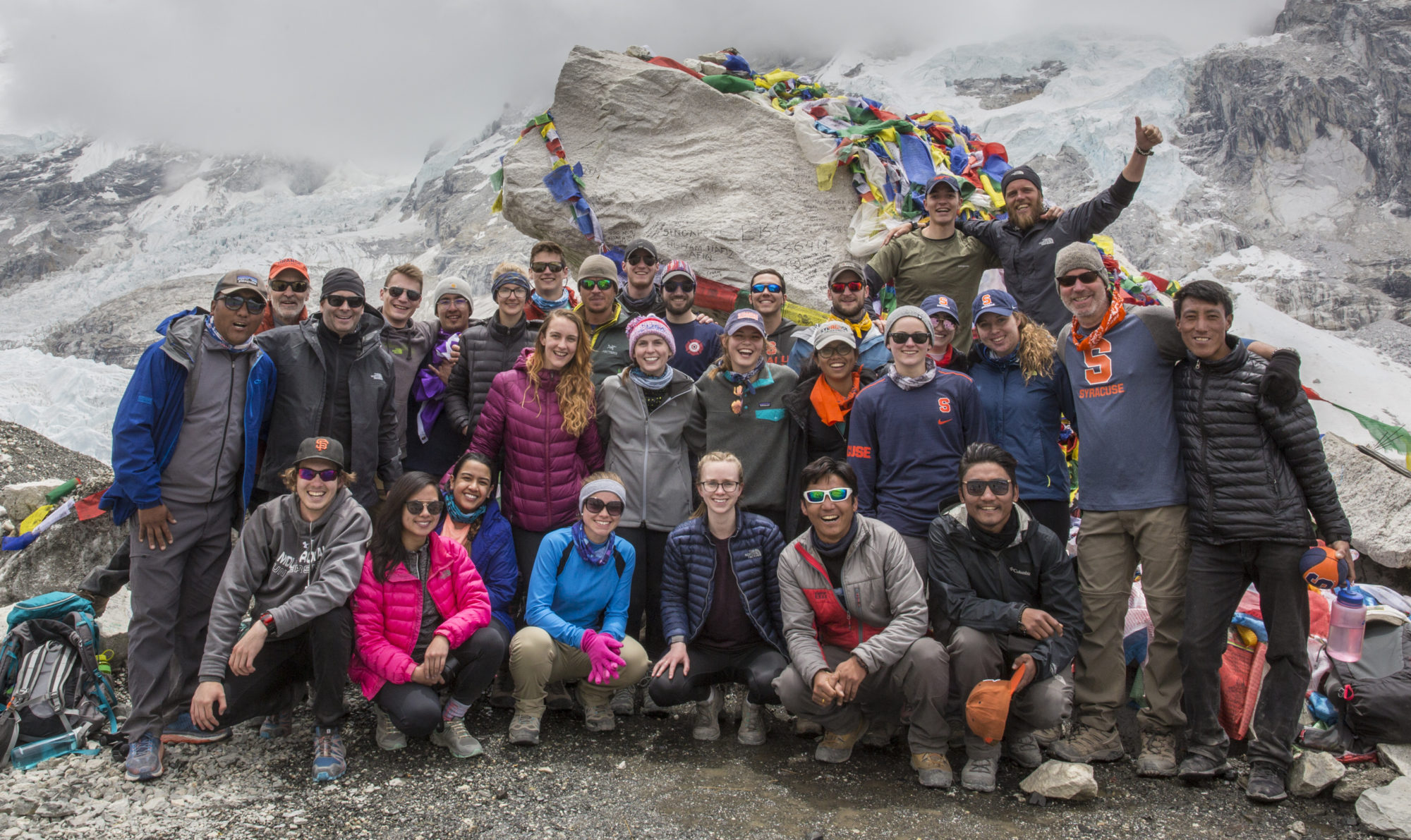
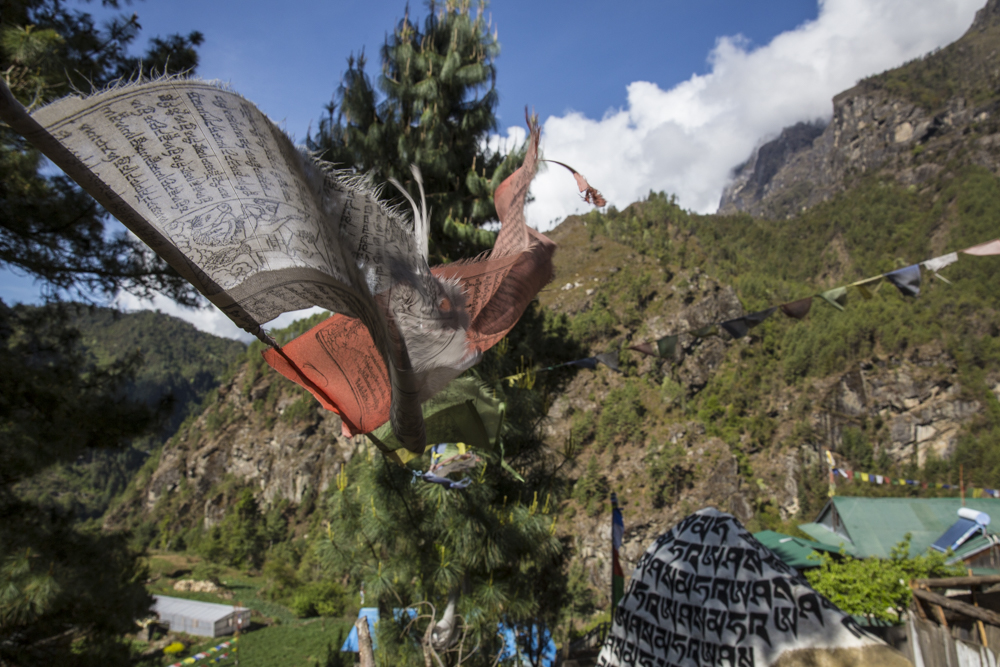
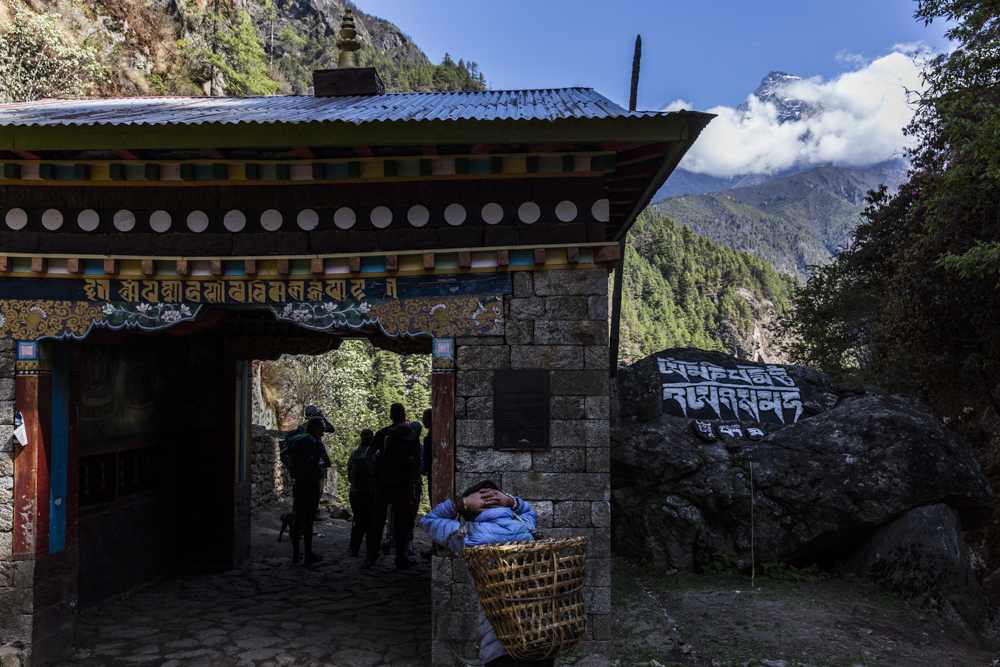
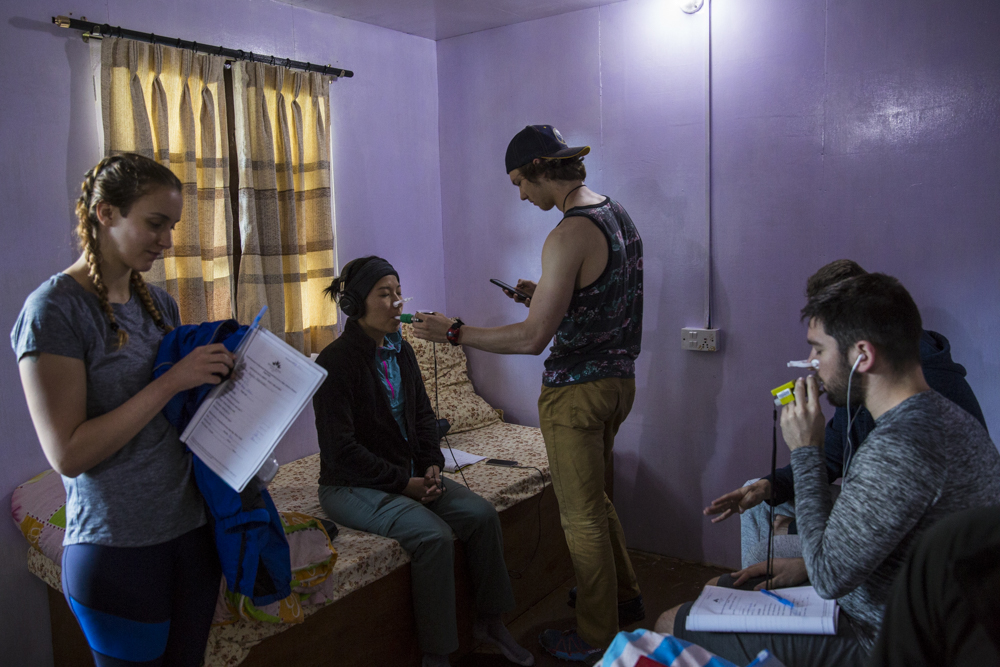
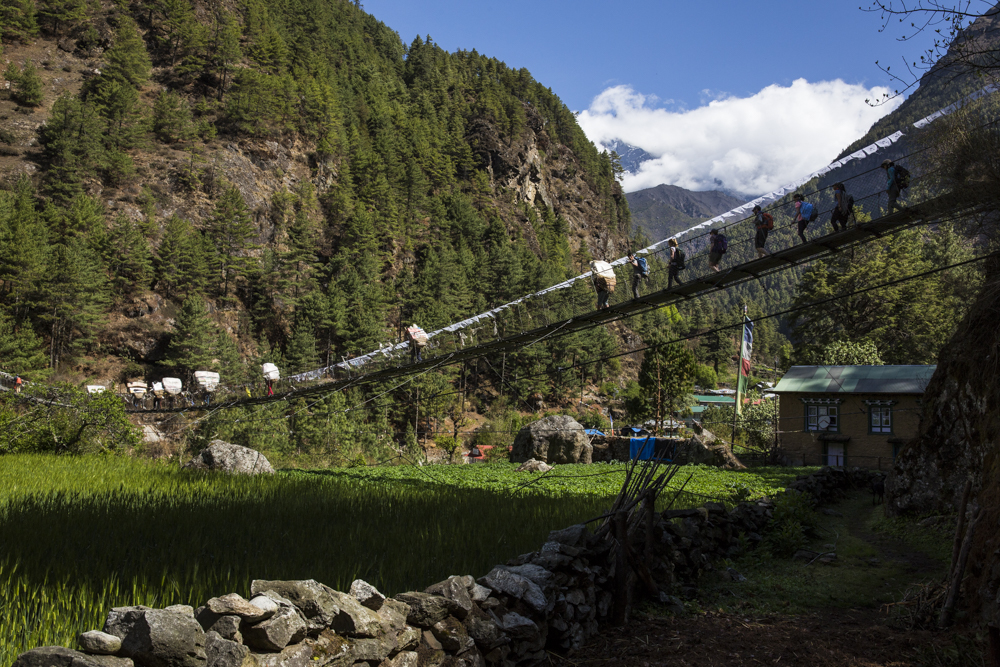
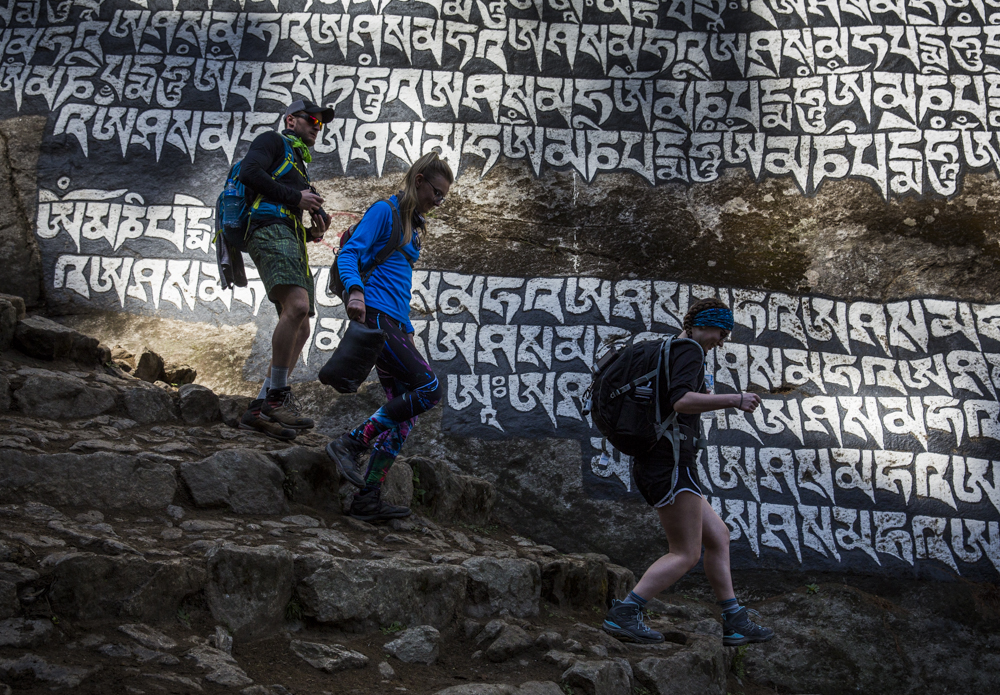
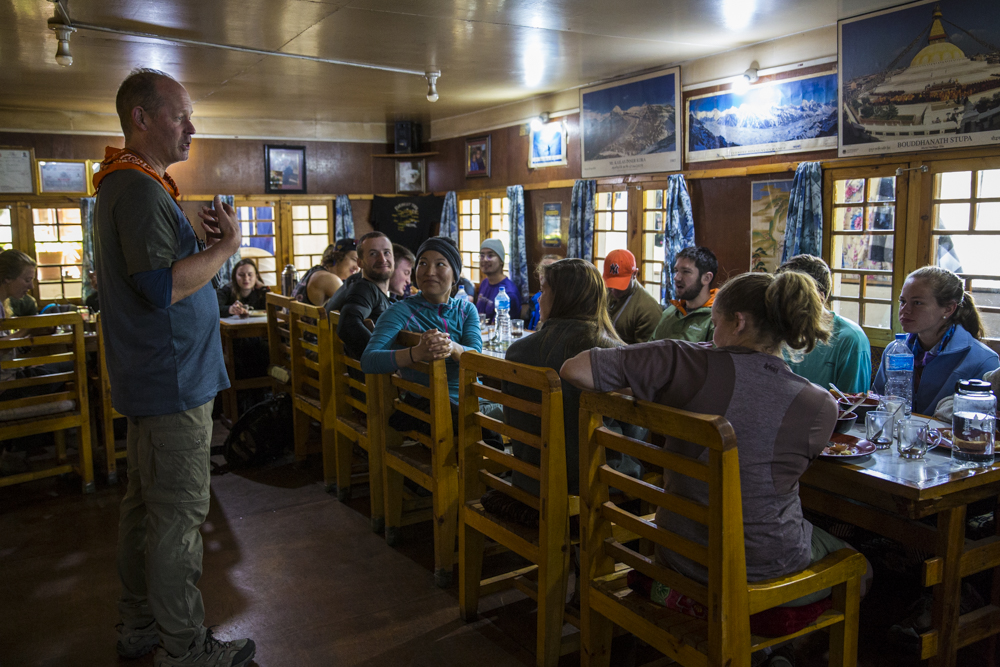
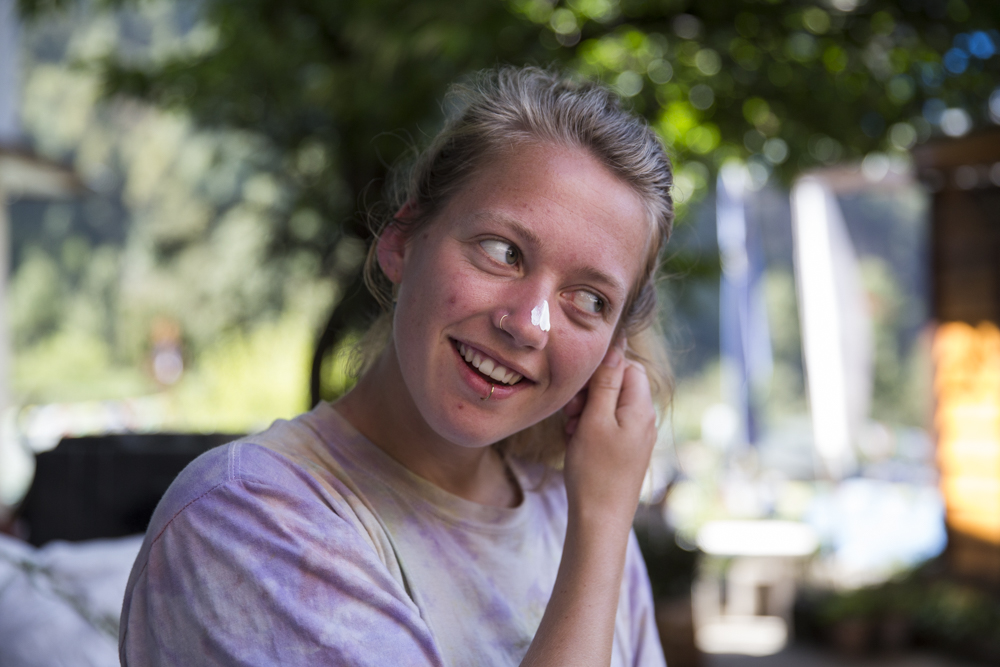
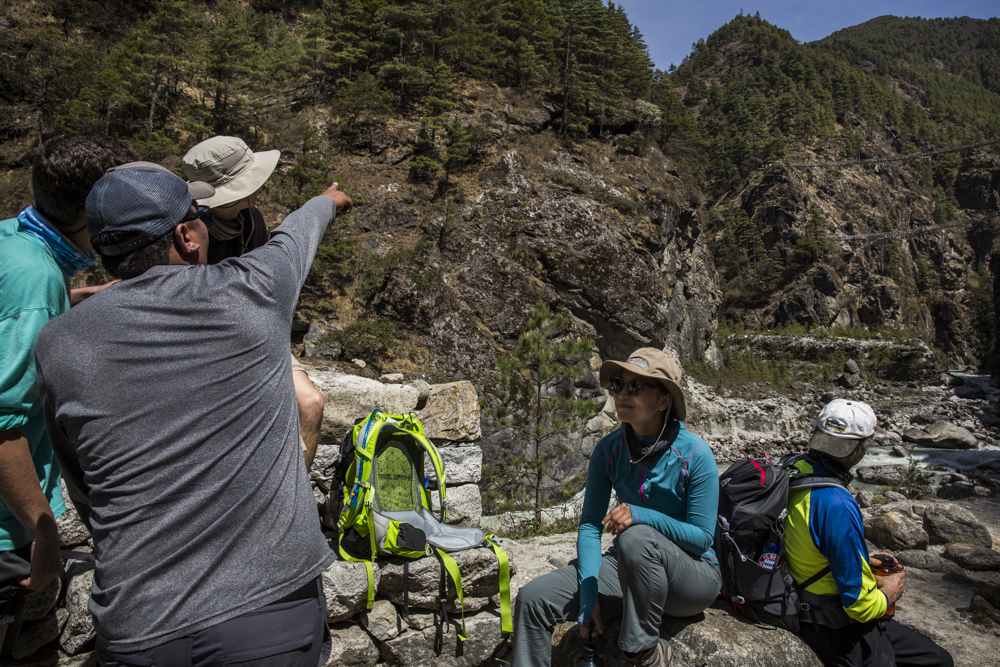
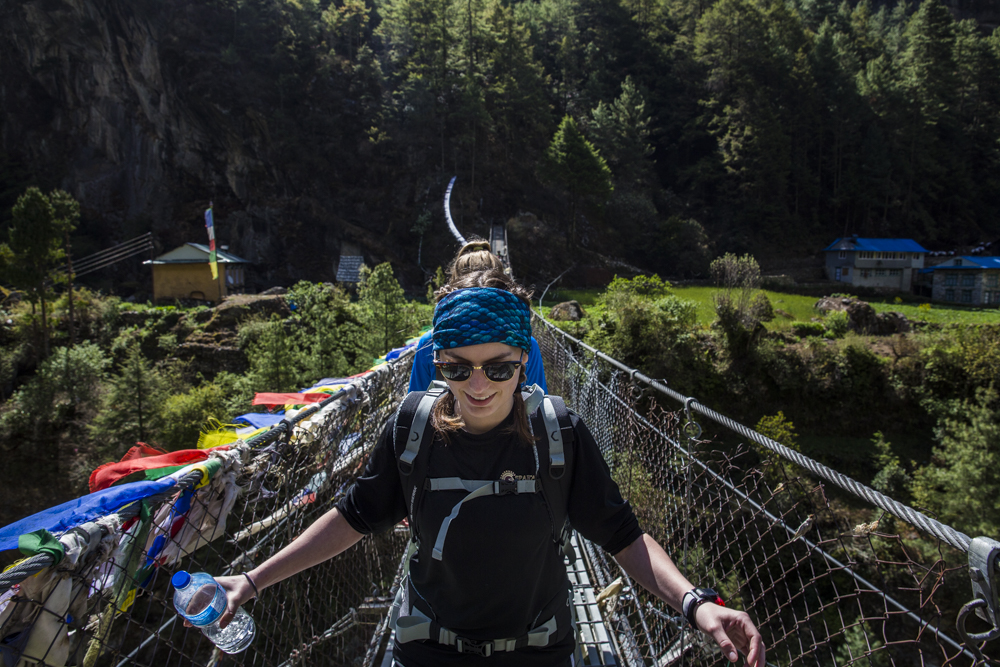
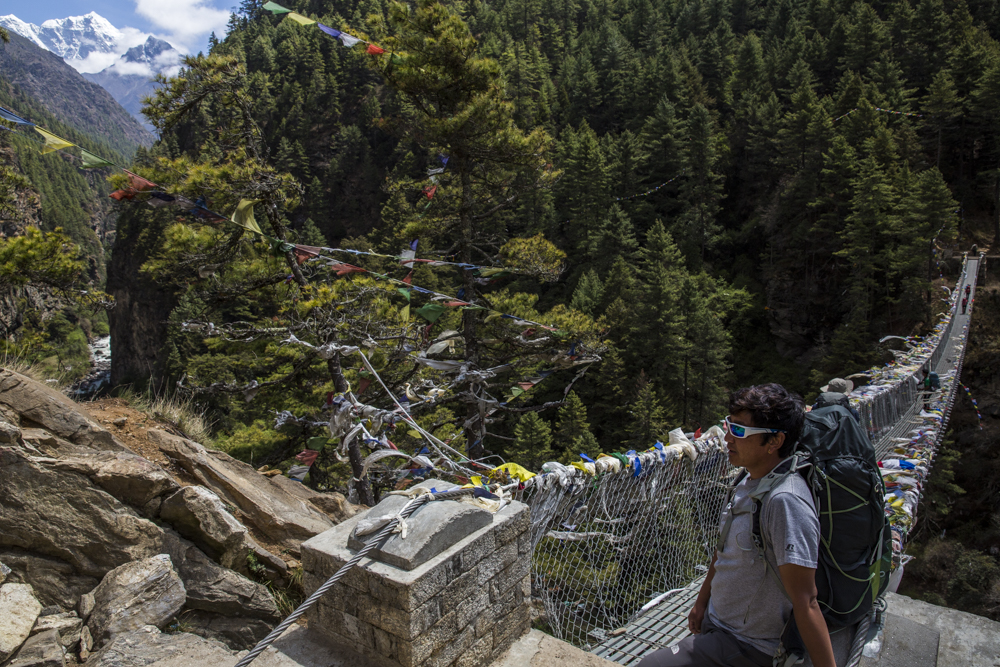
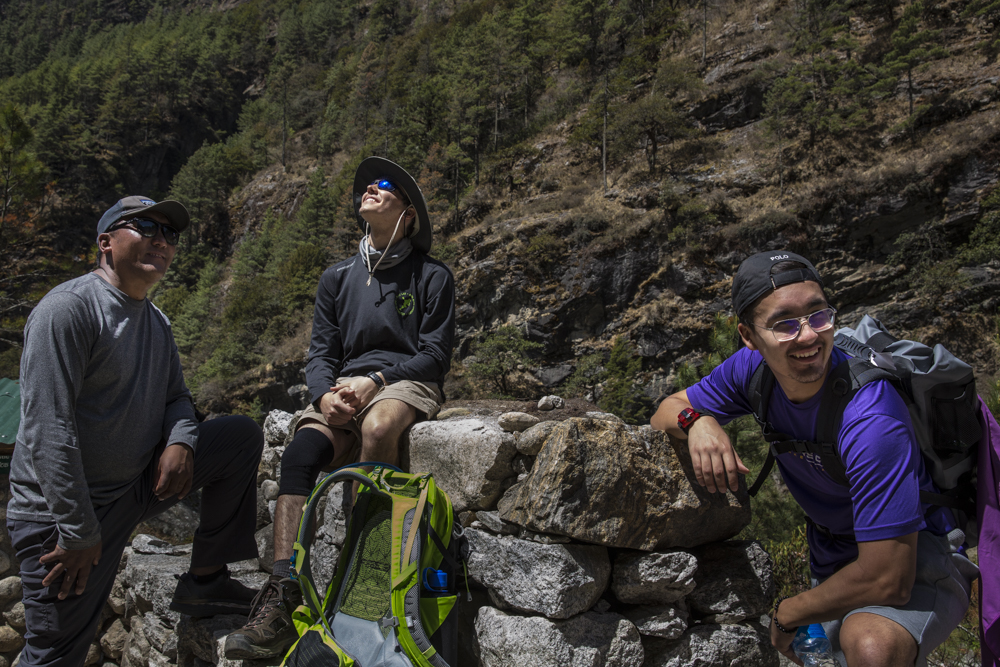
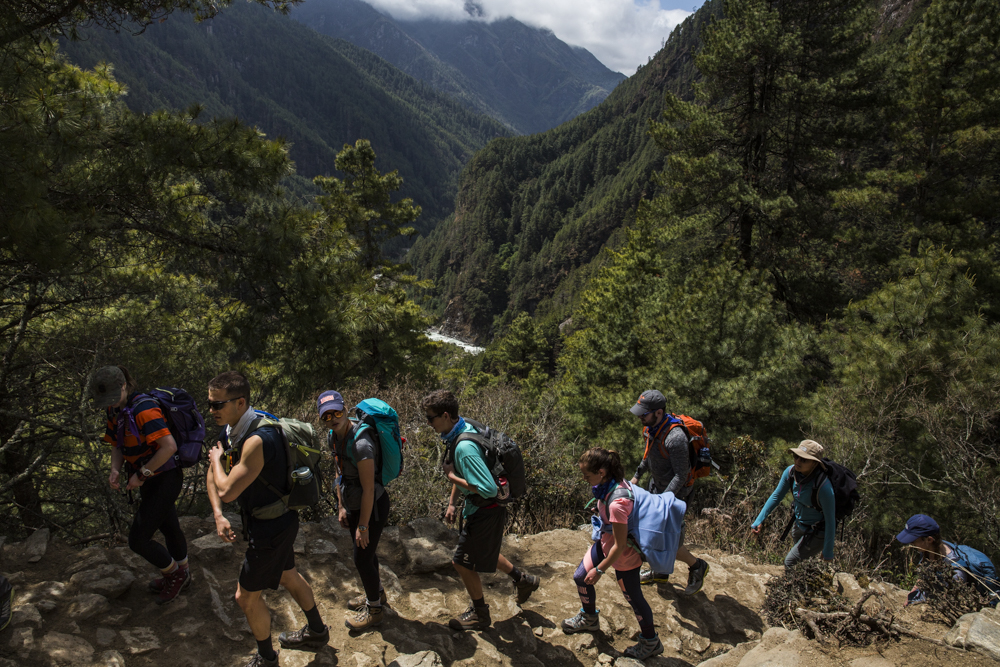
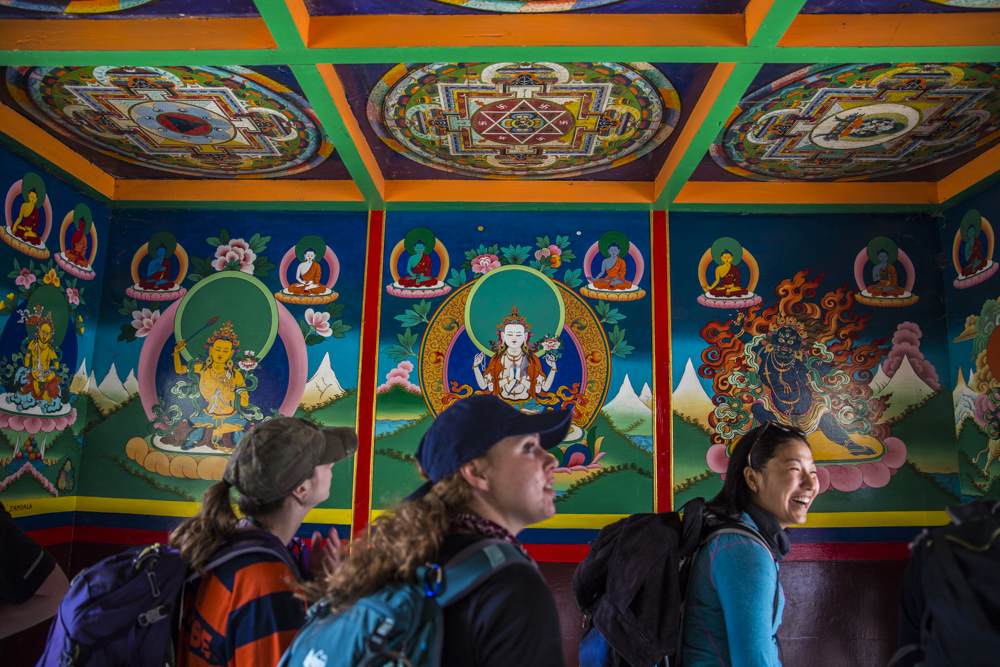
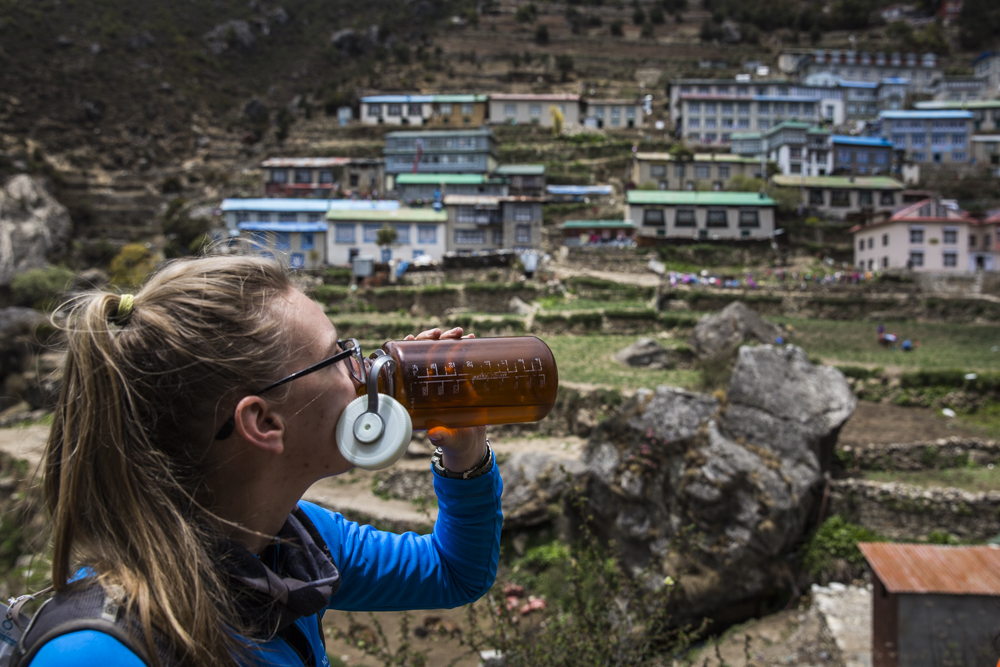
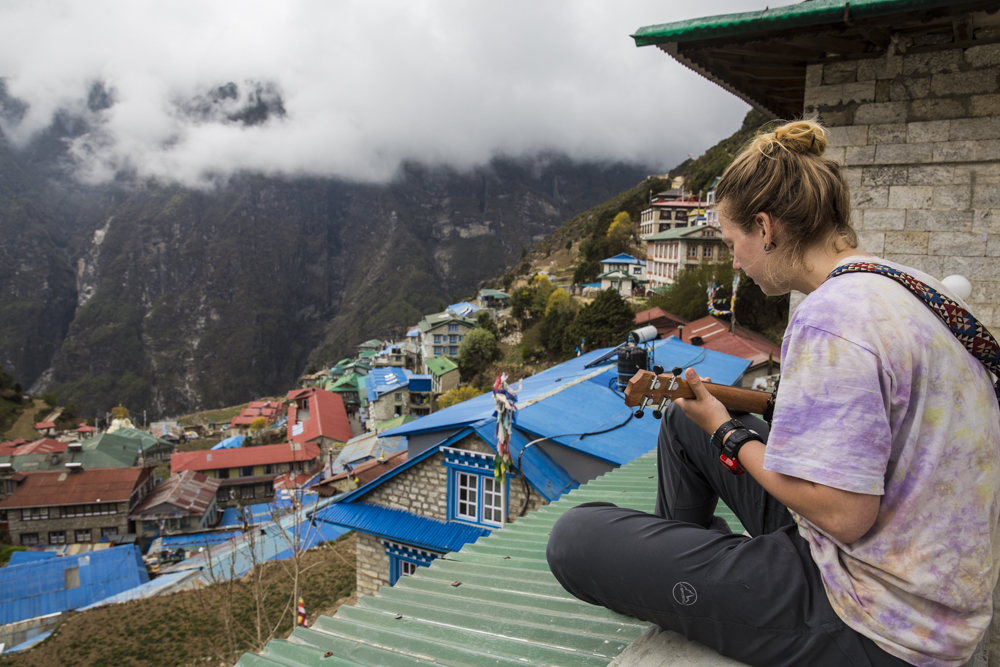
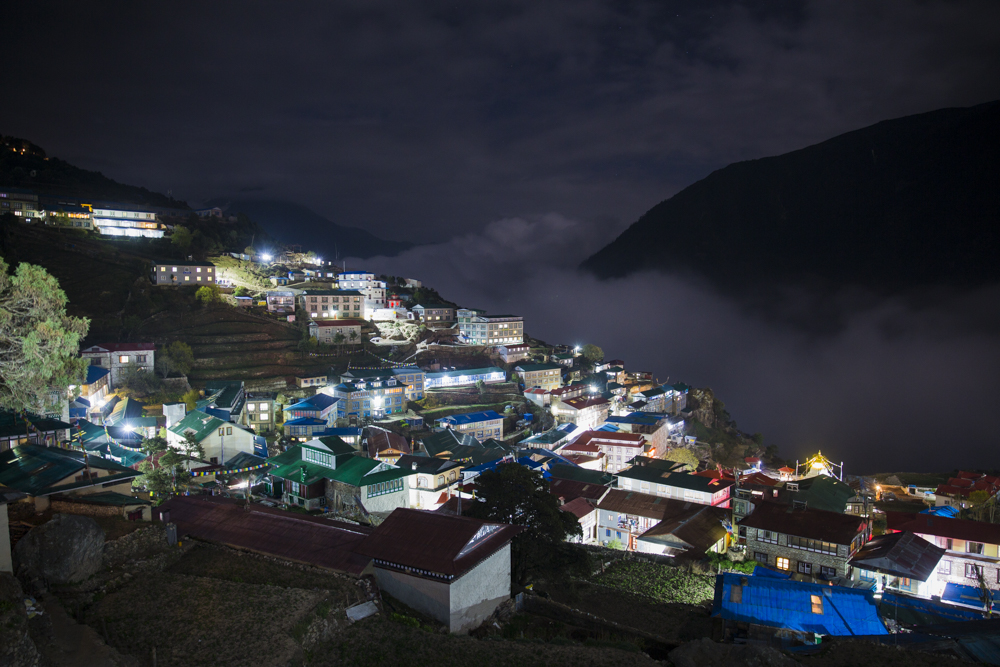
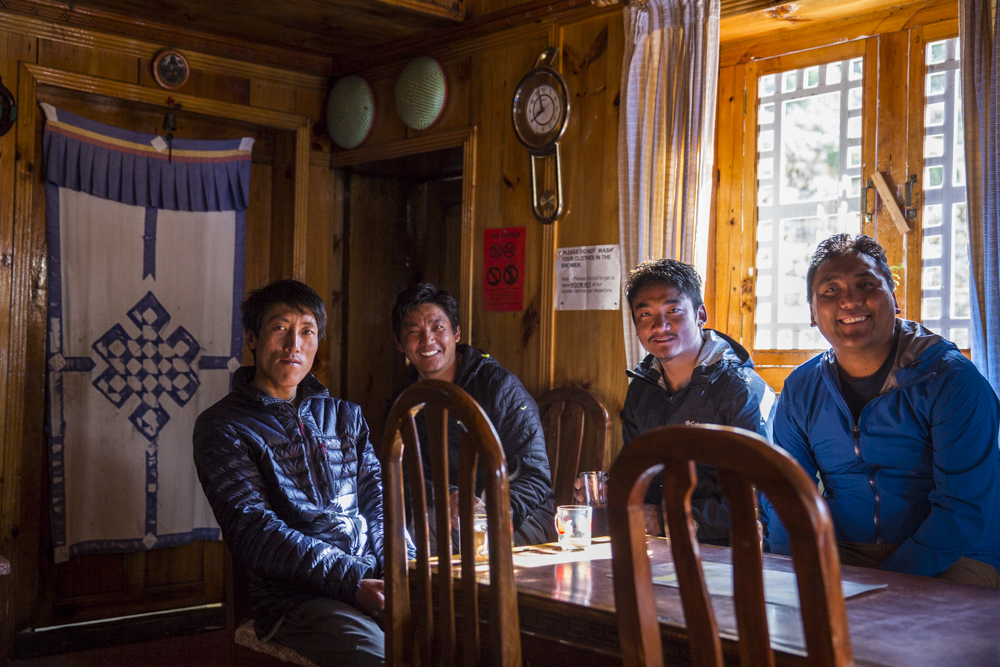
Thank you for giving us at home a wonderful snapshot of your day. It is great to see the sherpas and the beautiful town of Namche.
These blogs get more and more interesting. Great job, Mackenzie.
thank you all for the daily updates! it is great to read and feel a bit involved in your experiences. and to see some fotos of Anne 😉
Couldn’t help but notice Morgan has a hair tie on her wrist while crossing that bridge. A hair tie and a dream will get you anywhere!